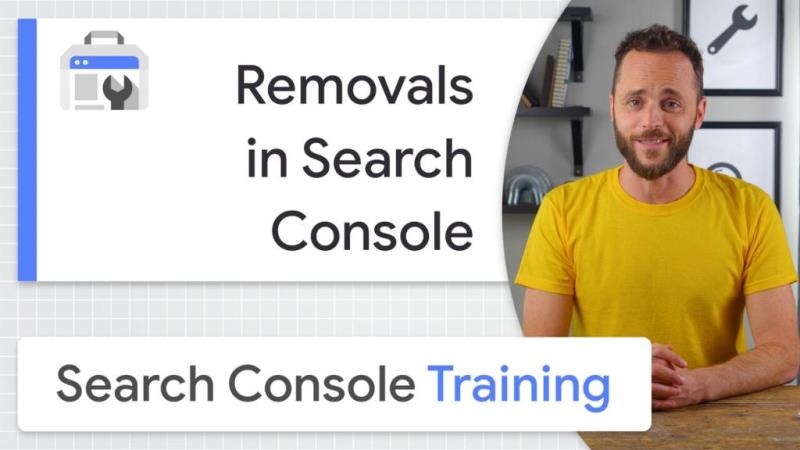Hiding contents from Research with Google removal tools
Temporarily hiding or permanently deleting some pages from Google Search is a need sometimes inevitable, and you can not always intervene “simply” with noindex tags and the robots.txt file, especially if we do not want to completely give up on content and totally delete the URL. In the Google Search Console, however, there are some removal tools that allow you to perform these operations, as explained by the new episode of the guide on Youtube.
The tool for temporary removals
Once again, Daniel Waisberg leads us to the in-depth discovery of these tools, and the video opens up with a focus on the Tool for Removals, which only a few months ago was released in a new version.
The tool is used to temporarily block the display of the pages of our site within search results, to consult the requests for removal of obsolete contents and to display the site Urls reported as pages with adult content. It is not the right tool to request the permanent removal of our pages, nor to remove personal information on Google that appear on sites on which we have no control whatsoever.
How to use the removals tool
The tool is located in the sidebar of the main screen of the Search Console and is divided into three sections: temporary removals, outdated contents and requests for Safesearch filter.
To send a new request for temporary removal just select the corresponding tab and enter the URL to hide. It opens a window that leads us to two possibilities: we can continue with the request to remove the URL from Google Search (which has a maximum duration of about 6 months and also cleans the cache copy of the page) or only request the cleaning of the cache copy of the page. In this second case, Google deletes the stored copies and removes the page description snippets from the SERPs until a new scan of the URL (generating snippets from the new content).
Two options: to hide the page for six months or to delete cache copies
The request for temporary removal can be a quick first step to then proceed to the final removal of a page, offering us a long enough period of time so to find a solution in one sense (new contents and visible page, or blocked with password) or in the other (permanent removal).
The cache cleaning request can be used instead to remove sensitive information from a page and update the preview snippets shown by Google (without removing the page itself from search results).
Managing obsolete contents
The second section within the removal tool allows us to find out if there are pages reported as “obsolete” by any Search user as they no longer contain the information shown by Google. The report however does not compel Google to remove such pages, so this tool basically has an informative function and should not worry us too much, says Waisberg.
There are two types of requests: removal of obsolete cache indicates that the page still exists, but its content has changed or been partially removed; Google will clean up the preview snippets in SERP until the next scan and the page will no longer be shown in the results for queries related to the removed content. Removing obsolete pages is instead used when the page no longer exists and a user has asked for its deletion from Google.
The SafeSearch filter
The Google Safesearch filter is used to prevent the appearance in search results of pages with adult and sexually explicit content; users can report contents that should be filtered according to these criteria and, if the Google verification confirms, the related Urls are tagged as adult content and hidden from active-filtered searches.
How to permanently remove pages from Google
There are cases, however, in which it is necessary to permanently delete the pages of a site from Google: actually, explains Daniel Waisberg, there is no special tool nor you can send a request, but you have to implement one or more specific actions directly on the site.
So, to delete a page from Google we can:
- Remove or update the current page content and return a 404 or 410 status code.
- Non-HTML files, such as PDFs, must be completely removed from the server.
- Block access to content, for example by requesting a password.
- Use the noindex meta tag to indicate that the page should not be indexed, which is a less secure method than the others, though.
Instead, it does not delete a page from Google:
- Performing a redirect 301 from an old content (not enough for the removal of content, says Waisberg)
- Insert directives inside the txt file.





